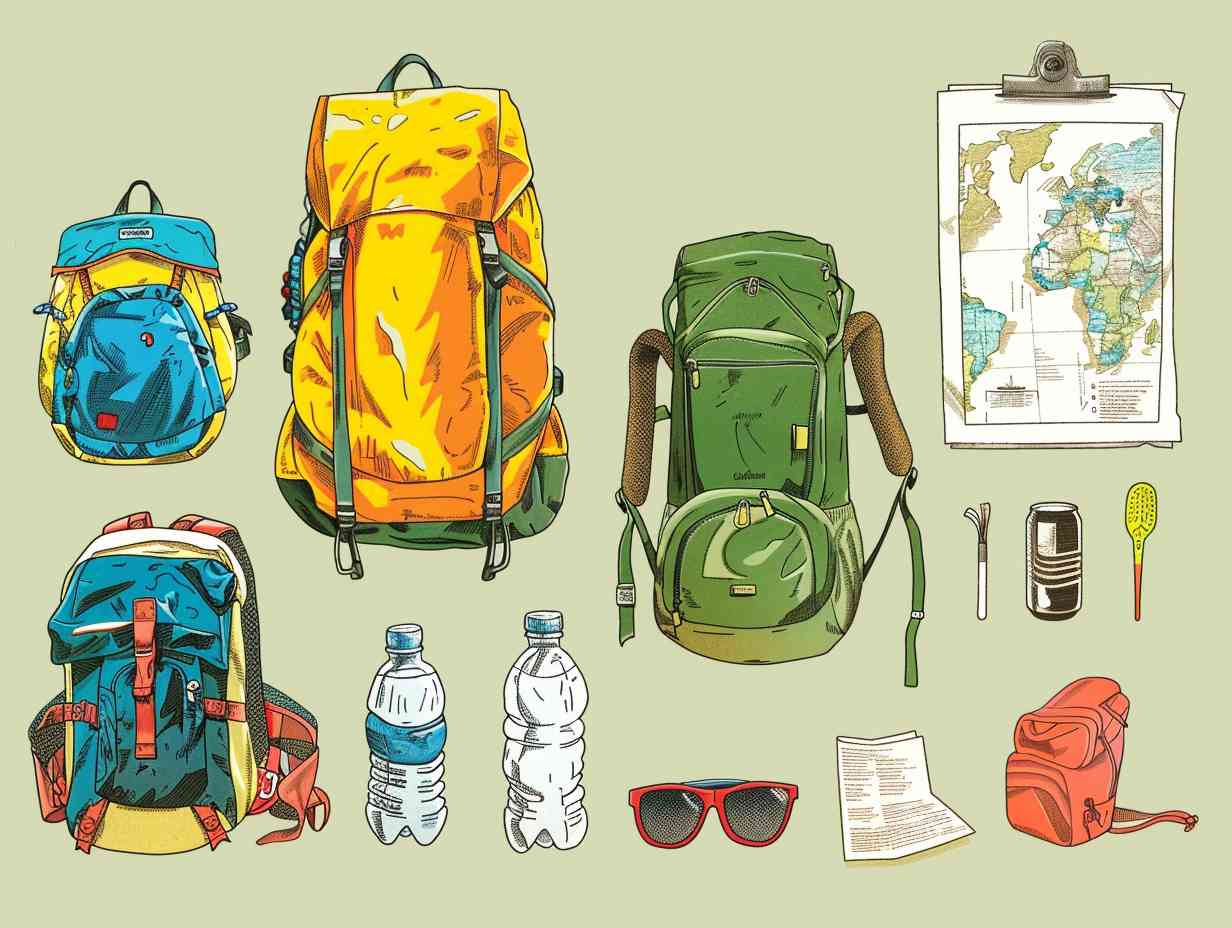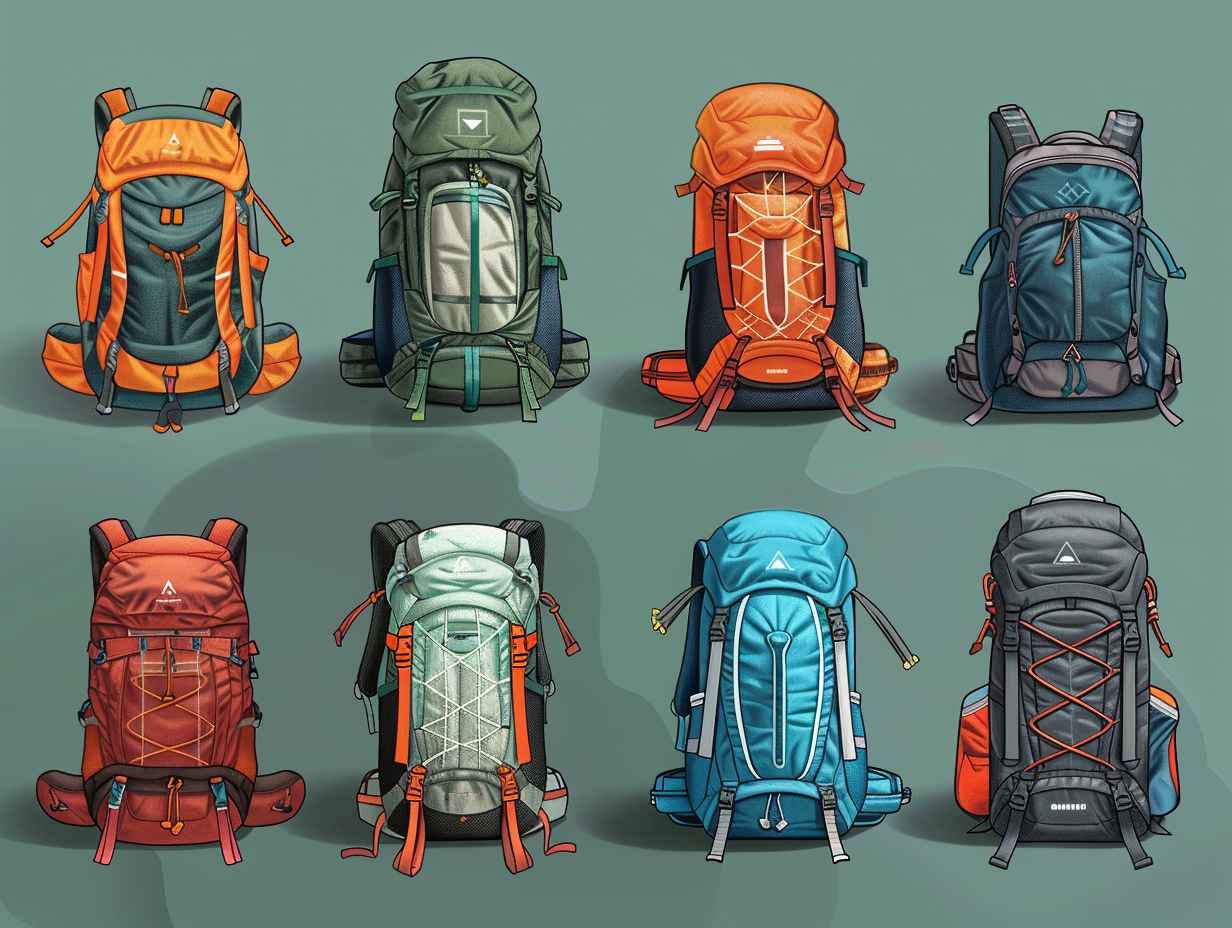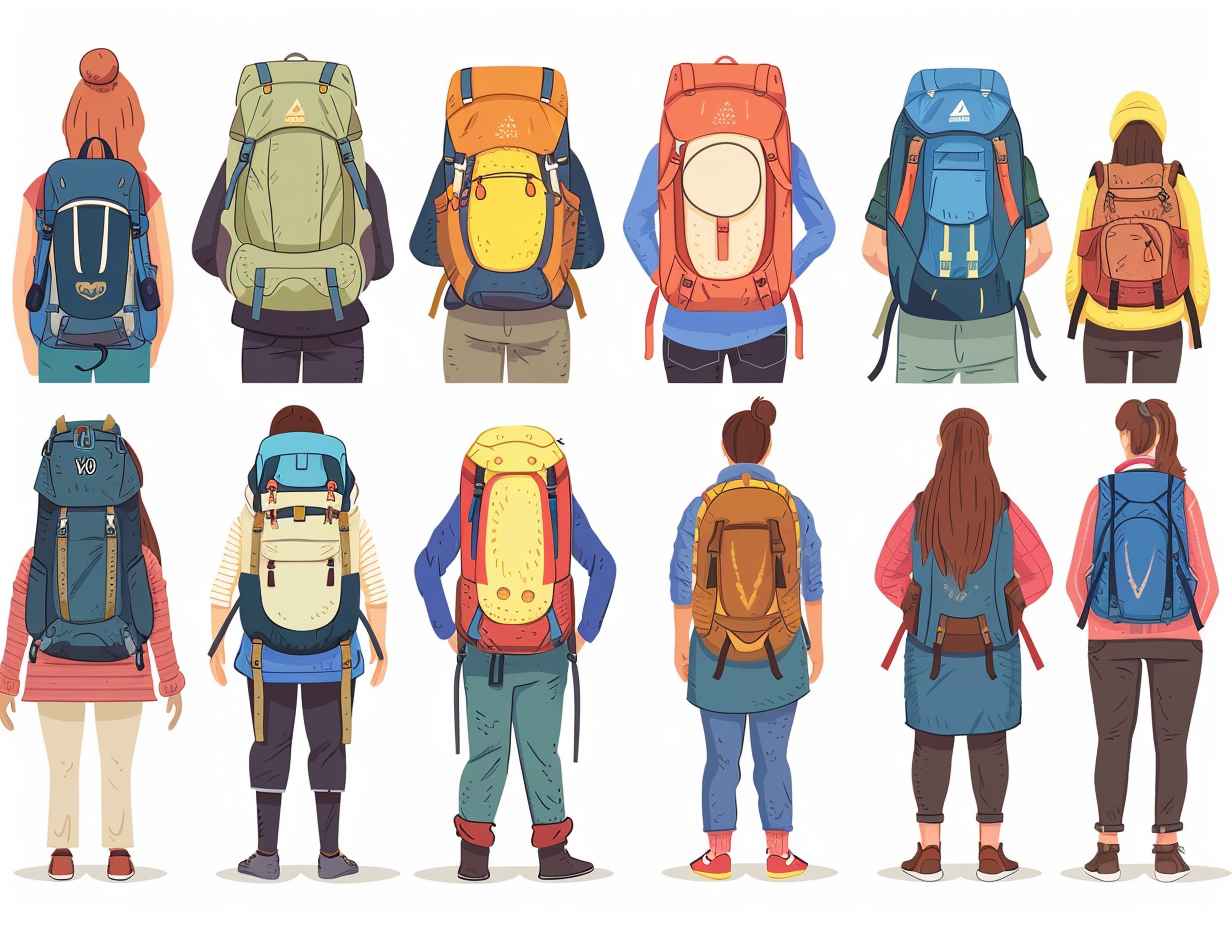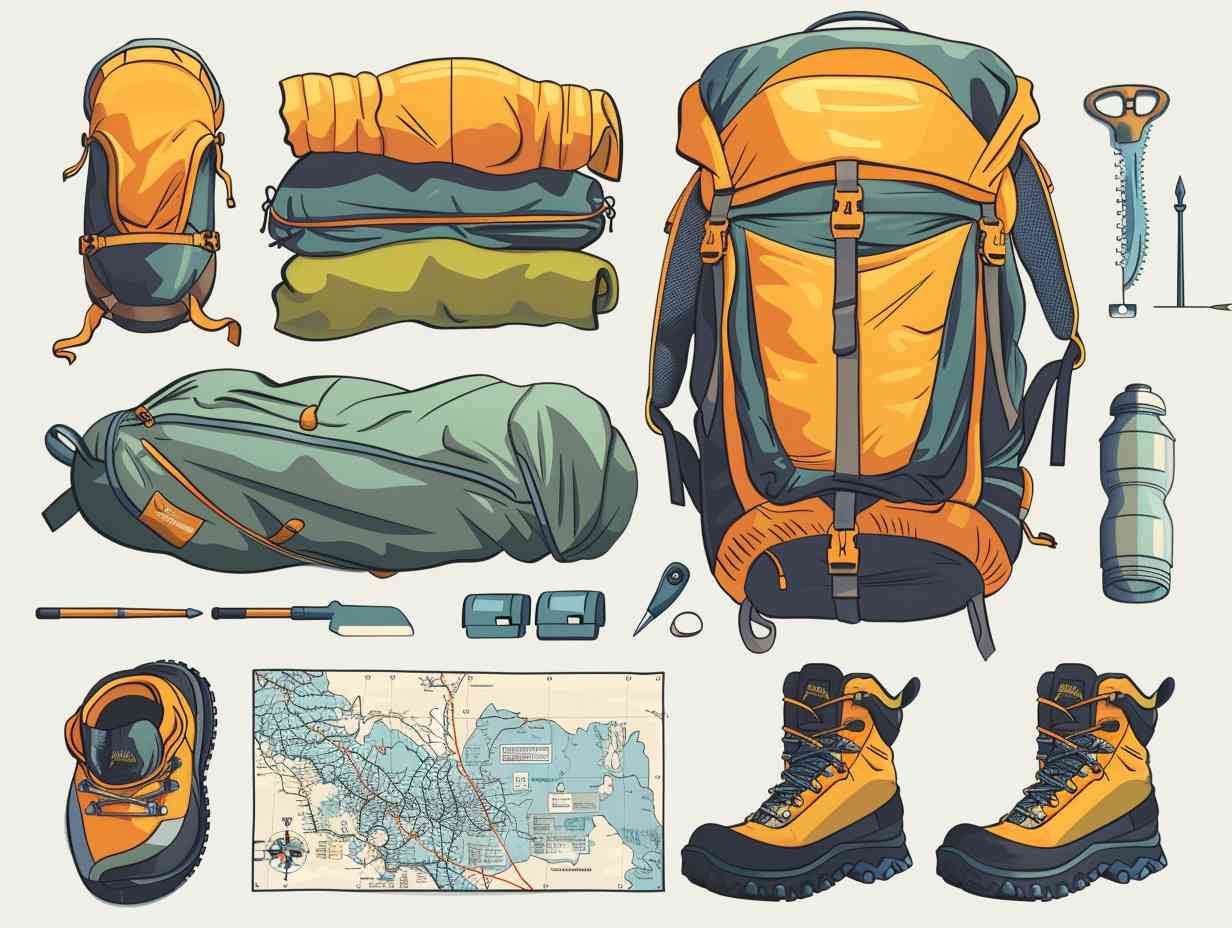
Backpack Types and Packing Tips
Table Of Contents
- Key Takeaways
- Backpack Types Overview
- Daypacks Vs. Backpacking Packs
- Travel Backpack Features
- Hiking Backpack Essentials
- School Backpack Organization
- Packing Light Techniques
- Backpack Fit and Comfort
- Tech Gear Storage Solutions
- Packing for Outdoor Adventures
- Backpack Maintenance Tips
- Frequently Asked Questions
- Conclusion

When selecting a backpack for your next adventure, choosing the right type can make a significant difference in your comfort and convenience. From daypacks to travel backpacks, each serves a specific purpose that can enhance your overall experience. The way you pack your bag is just as vital as the type you choose, affecting everything from organization to weight distribution. Are you ready to make sure you have the best backpack and packing strategy for your next journey?
Key Takeaways
- Choose backpack type based on trip length and load weight.
- Prioritize durability, comfort, and organization features.
- Pack light with multipurpose items and efficient organization.
- Utilize compartments and packing cubes for space optimization.
- Keep essentials accessible and distribute weight evenly for comfort.
Backpack Types Overview
When choosing a backpack for your outdoor adventures, consider factors like size, durability, and comfort. Size matters because you want a pack that fits all your essentials without being too bulky or heavy.
Durability is important for withstanding rugged terrains and unpredictable weather conditions. Look for sturdy materials and strong stitching.
Comfort is key for those long hikes or camping trips. Padded straps, adjustable waist belts, and ventilation are features to prioritize.
Additionally, consider the pack’s organization features like pockets, compartments, and accessibility. These can make a big difference in how efficiently you can access your gear on the go.
Daypacks Vs. Backpacking Packs
For outdoor excursions, distinguishing between daypacks and backpacking packs is essential for optimizing your gear-carrying capabilities. Daypacks are ideal for shorter trips, offering enough space for essentials like water, snacks, a light jacket, and other small items. They’re lightweight, compact, and perfect for day hikes or urban adventures.
On the other hand, backpacking packs are designed for longer treks, able to hold larger gear such as sleeping bags, tents, cooking equipment, and clothing for multi-day trips. These packs often have more support features like padded hip belts and adjustable suspension systems for carrying heavier loads comfortably.
Understanding the differences between daypacks and backpacking packs will help you choose the right pack for your next adventure.
Travel Backpack Features

Understanding the features of travel backpacks can greatly enhance your packing efficiency and comfort on your adventures. Look for backpacks with adjustable padded shoulder straps and hip belts to distribute weight evenly. Opt for a backpack with multiple compartments for easy organization of your belongings.
Consider a backpack with a padded laptop sleeve if you need to carry electronics. Look for water-resistant materials to safeguard your items from unexpected weather conditions. Choose a backpack with locking zippers for added security during your travels.
Additionally, select a backpack with breathable mesh panels to keep you cool and comfortable. These features will guarantee that your travel backpack meets your needs and enhances your overall travel experience.
Hiking Backpack Essentials
To guarantee a comfortable and efficient hiking experience, choosing the right essentials for your backpack is vital. Here are four must-have items to pack for your next hiking adventure:
-
Water: Staying hydrated is essential, so make sure to carry an adequate supply of water or a water filtration system.
-
Navigation Tools: Bring a map, compass, or GPS device to help you stay on track and navigate the trails effectively.
-
First Aid Kit: Be prepared for any minor injuries or emergencies with a well-stocked first aid kit.
-
Snacks: Pack lightweight, energy-boosting snacks like trail mix, energy bars, or fruits to keep you fueled during your hike.
These essentials will ensure you have a safe and enjoyable hiking experience.
School Backpack Organization

Keep your school backpack organized to make your daily routines smoother and stress-free. Start by using compartments or small pouches to separate your items. Designate specific pockets for your books, stationery, and personal belongings so you can easily locate them.
Utilize a pencil case or small bag to store pens, pencils, and erasers, preventing them from getting lost at the bottom of your backpack. Keep heavier items closer to your back to distribute weight evenly and prevent strain. Regularly clean out your backpack to remove unnecessary items and papers.
Packing Light Techniques
To lighten your load and make traveling more convenient, consider incorporating efficient packing techniques when preparing your backpack for the day.
Here are some tips to help you pack light and smart:
-
Roll Your Clothes: Rolling your clothes instead of folding them can save space and reduce wrinkles.
-
Choose Multipurpose Items: Opt for items that can serve multiple functions to minimize the number of things you need to pack.
-
Limit Your Shoes: Shoes are heavy and take up a lot of space, so try to bring only the essentials.
-
Use Packing Cubes: Packing cubes can help you organize your belongings efficiently and compress your items to save space in your backpack.
Backpack Fit and Comfort

Achieving proper backpack fit is essential for ensuring comfort and minimizing strain on your shoulders and back during your travels.
To achieve the right fit, start by adjusting the shoulder straps so they’re snug but not too tight.
The hip belt should sit comfortably on your hips, transferring most of the weight to your lower body.
Make sure the backpack isn’t too long or short for your torso length to prevent discomfort.
Additionally, adjust the sternum strap to keep the shoulder straps in place and maintain stability.
Tech Gear Storage Solutions
For efficient organization of your electronic devices, consider utilizing specialized compartments and cable management solutions in your backpack. Keeping your tech gear safe and easily accessible is crucial for a smooth journey.
Here are some tips to optimize your tech gear storage:
-
Padded Laptop Sleeve: Protect your laptop from bumps and scratches.
-
Cable Organizer: Keep cables tangle-free and easily accessible.
-
External Battery Pocket: Guarantee your power bank is readily available for charging devices.
-
Water-Resistant Pouch: Store sensitive electronics like cameras or hard drives in a waterproof pouch for extra protection.
Packing for Outdoor Adventures

Consider incorporating versatile and durable gear for your outdoor adventures to guarantee preparedness and comfort throughout your journey.
When packing for outdoor excursions, prioritize essential items like a first aid kit, water bottle, navigation tools, extra clothing layers, and high-energy snacks. Opt for lightweight and compact items to maximize space in your backpack without compromising on functionality.
Pack your gear strategically, placing frequently used items within easy reach. Utilize compression sacks or packing cubes to organize your clothes and keep them dry. Remember to pack according to the weather conditions and terrain of your adventure.
Backpack Maintenance Tips
To ensure your backpack remains in top condition for your adventures, regular maintenance is vital. Here are some essential maintenance tips:
-
Clean your backpack: Regularly wipe down the exterior and interior of your backpack with a damp cloth to remove dirt and debris.
-
Inspect for damages: Check for any tears, loose threads, or broken zippers. Repair these issues promptly to prevent further damage.
-
Air it out: After each use, leave your backpack open in a well-ventilated area to prevent musty odors and mold growth.
-
Store properly: When not in use, store your backpack in a cool, dry place away from direct sunlight to maintain its quality and durability.
Frequently Asked Questions
Are There Any Backpacks Specifically Designed for Carrying Pets?
Yes, there are backpacks specifically designed for carrying pets. These backpacks come with features like ventilation, adjustable straps, and secure closures to guarantee your furry friend’s comfort and safety during travel.
Can I Use a Travel Backpack as a Carry-On on All Airlines?
Imagine your travel backpack as a trusty sidekick, always ready to accompany you on any airline adventure. Yes, you can use a travel backpack as a carry-on on most airlines, ensuring convenience and ease during your journey.
What Is the Best Way to Pack a Backpack for Long-Term Travel?
When packing for long-term travel, prioritize versatile clothing, pack in layers, utilize packing cubes for organization, and distribute weight evenly. Consider the climate and activities to pack accordingly, and remember to leave room for souvenirs!
Are There Backpacks With Built-In Solar Panels for Charging Devices?
Yes, there are backpacks with built-in solar panels for charging devices. They are convenient for staying connected on the go while enjoying the outdoors. Consider this feature when selecting a backpack for your needs.
How Do I Prevent My Backpack From Getting Stolen While Traveling?
When traveling, always keep your backpack close to you. Be mindful of your surroundings and avoid leaving it unattended. Use locks or anti-theft backpacks for added security. Stay vigilant to protect your belongings.
Conclusion
Now that you’ve learned about different backpack types and packing tips, you’re ready to hit the road like a well-prepared explorer.
Remember, choosing the right backpack is like finding the perfect travel companion - it should be reliable, comfortable, and able to carry all your essentials effortlessly.
So pack smart, stay organized, and enjoy your adventures with your trusty backpack by your side!
Disclaimer: Some information is provided through AI. Users should always conduct their own research and consult with qualified professionals before making any decisions.Affiliate information declaration: We may earn revenue from the products referred on this page and participate in affiliate programs.


